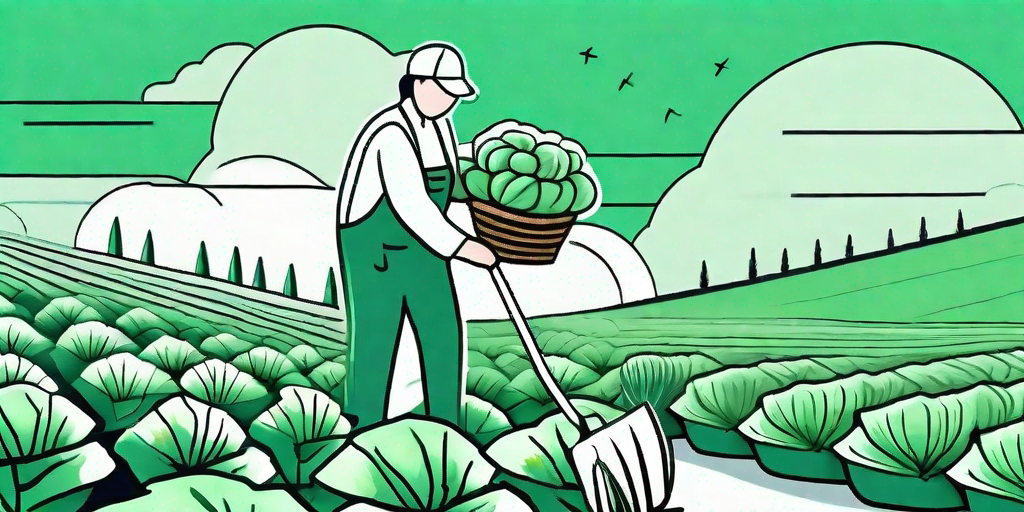
Ah, the humble cabbage. A staple in many a kitchen, this leafy green (or red, or purple) delight is a versatile vegetable that's packed with vitamins and nutrients. But did you know that growing and harvesting your own cabbage can be an incredibly rewarding experience? It's true! With a little bit of know-how and a few handy tips and tricks, you can be on your way to a bountiful cabbage harvest in no time.
Understanding the Cabbage Plant
Before we dive into the nitty-gritty of cabbage harvesting, it's important to understand a bit about the cabbage plant itself. Cabbage is a cool-season crop, which means it prefers cooler temperatures. It's also a biennial plant, which means it completes its life cycle in two years. However, most gardeners grow it as an annual for convenience.
There are several varieties of cabbage, including green, red, and savoy, each with its own unique flavor and texture. The type of cabbage you choose to grow will depend on your personal preference and your local climate conditions.
The Life Cycle of a Cabbage
The life cycle of a cabbage begins with the germination of seeds. After about a week, the seeds sprout into seedlings. These seedlings then grow into mature plants over the course of several weeks. Once the cabbage head has formed, it's time for harvesting.
After harvesting, the plant will continue to grow and produce smaller heads, known as "cabbage sprouts". These can also be harvested and eaten, although they are not as large or as flavorful as the main head.
Preparing for Harvest
Now that we've covered the basics of the cabbage plant, let's move on to preparing for harvest. This involves several steps, including monitoring the growth of your cabbage, knowing when to harvest, and understanding how to harvest properly.
Monitoring the growth of your cabbage is crucial. You'll want to keep an eye on your plants, checking them regularly for signs of pests or disease. It's also important to ensure they're getting enough water and nutrients.
When to Harvest
Knowing when to harvest your cabbage can be a bit tricky. As a general rule, cabbage is ready to harvest when the head is firm and the size of a small to medium-sized bowling ball. This typically occurs about 70 to 100 days after planting, depending on the variety.
However, don't be too hasty! If you harvest too early, the heads may not be fully formed. On the other hand, if you wait too long, the heads can split open, making them susceptible to pests and disease.
How to Harvest
When it comes to harvesting your cabbage, the process is fairly simple. Using a sharp knife, cut the head off at the base of the plant. Be sure to leave a few outer leaves on the head to protect it.
Once you've harvested your cabbage, it's important to store it properly to ensure it stays fresh. Cabbage can be stored in the refrigerator for up to two weeks. If you have a large harvest, you might consider preserving your cabbage by making sauerkraut or kimchi.
Common Challenges and Solutions
Like any gardening endeavor, growing and harvesting cabbage comes with its own set of challenges. But don't worry, we've got you covered with solutions to some of the most common problems.
One common issue is pests. Cabbage is a favorite snack for critters like slugs, snails, and cabbage worms. To combat these pests, consider using organic pesticides or introducing beneficial insects, like ladybugs, into your garden.
Dealing with Disease
Cabbage is also susceptible to a variety of diseases, including black rot and clubroot. These diseases can be prevented by practicing good crop rotation and by keeping your garden clean and free of debris.
If your cabbage does become infected, it's best to remove and destroy the affected plants to prevent the disease from spreading.
Overcoming Weather Challenges
As we mentioned earlier, cabbage prefers cool weather. This means it can be a challenge to grow cabbage in areas with hot summers or cold winters. However, by choosing the right variety and providing proper care, you can still have a successful cabbage harvest.
If you live in a hot climate, consider growing a heat-tolerant variety of cabbage. If you live in a cold climate, consider starting your seeds indoors or using a greenhouse.
FAQs
Now, let's tackle some frequently asked questions about cabbage harvesting.
Can I harvest cabbage after it has bolted?
Yes, you can still harvest cabbage after it has bolted, or gone to seed. However, the flavor may be more bitter than usual.
What can I do with the outer leaves of the cabbage?
The outer leaves of the cabbage can be used in a variety of ways. They can be added to soups or stews, used as a wrap for stuffed cabbage, or composted to enrich your garden soil.
Can I grow cabbage in containers?
Absolutely! Cabbage can be successfully grown in containers. Just be sure to choose a container that's large enough to accommodate the mature plant, and provide plenty of water and nutrients.
Conclusion
And there you have it, folks! A comprehensive guide to cabbage harvesting. With these tips and tricks in your gardening arsenal, you'll be well on your way to a bountiful cabbage harvest. Happy gardening!











